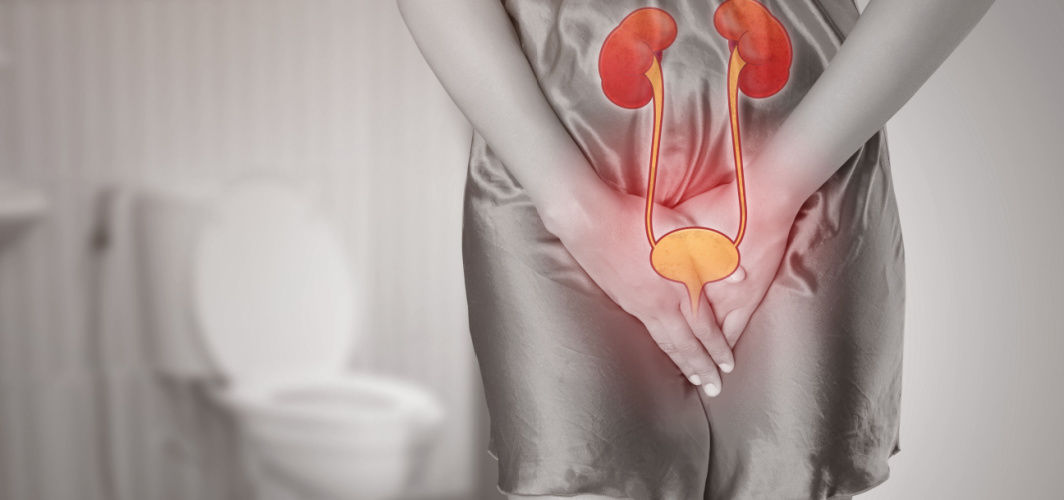General Health
Urinary Incontinence: How To Manage Urine Leakage In Ageing Adults?
8 min read
By Apollo 24|7, Published on - 20 June 2023
Share this article
0
0 like

With age, human bodies change, and sometimes those changes bring unexpected challenges. One such challenge is urinary incontinence, the involuntary leakage of urine. This condition profoundly impacts the daily lives of older adults, affecting physical comfort and emotional well-being. However, there are various strategies and approaches available to manage and improve this condition.
What Is Urinary Incontinence?
Urinary incontinence refers to the involuntary leakage of urine, occurring when the muscles and nerves responsible for bladder control do not function properly. It is a condition characterized by the inability to control urine flow, resulting in unintended leaks.
How Does The Urinary Bladder Normally Work?
The bladder, a hollow organ located in the lower abdomen, plays a crucial role in storing urine. When the bladder fills with urine, it sends signals to the brain, which then triggers a response to facilitate urination. The brain instructs the muscles in the bladder to contract while simultaneously relaxing the muscles surrounding the urethra. This coordinated action allows urine to pass out of the body during voluntary voiding.
Also read: Why Are Urinary Tract Infections More Common In Older Adults?
What Happens In Urinary Incontinence?
The normal urinary function involves the seamless coordination of muscles and nerves to control urination without leakage. On the contrary, individuals with urinary incontinence experience a disruption in this coordination. The muscles and nerves responsible for bladder control fail to work harmoniously, leading to urine leakage that is beyond their control.
Urinary Incontinence Causes
Urinary incontinence is more common in older adults due to various factors:
1. Muscle Weakness: Our muscles naturally weaken over time, including the pelvic floor muscles that help control our urine flow. This can lead to an increase in bathroom trips.
2. Decreased Bladder Capacity: Our bladder may not be able to hold as much urine as it once did, causing more frequent urges.
3. Declining Nerve Function: Our nerve function that coordinates bladder control can also decline with age, making it harder to tell when our bladders are full.
4. Hormonal Changes: Women going through menopause may experience hormonal changes that weaken the pelvic floor muscles, resulting in urinary incontinence.
Additionally, certain health conditions contribute to urinary incontinence in older adults:
1. Urinary Tract Infections (UTIs): Common in older adults, UTIs can irritate the bladder and cause urgency and leakage.
2. Enlarged Prostate: Men may experience urinary incontinence due to an enlarged prostate, a condition known as benign prostatic hyperplasia (BPH).
3. Chronic Diseases: Conditions like diabetes, Parkinson's disease, multiple sclerosis, and stroke can affect nerve function and muscle control, leading to urinary incontinence.
4. Medications: Certain medications, including diuretics, sedatives, and muscle relaxants, can affect bladder function and increase the risk of urinary incontinence.
5. Obstruction or Blockage: Urinary incontinence may occur due to blockages in the urinary tract hindering normal urine flow.
Urinary Incontinence Symptoms
Urinary incontinence can manifest through various signs and symptoms. Some common symptoms include:
1. Unintentional Urine Leakage: The hallmark symptom of urinary incontinence occurs during activities like coughing, sneezing, laughing, or lifting heavy objects.
2. The urgency to Urinate: Sudden, compelling urge to urinate that is difficult to control.
3. Frequent Urination: Increased frequency of urination, even when the bladder is not full.
4. Nocturia (Nighttime Urination): Multiple trips to the bathroom during the night, disrupting sleep patterns.
5. Lifestyle Limitations: Urinary incontinence significantly impacts daily life, including limitations in social activities, avoidance of physical exertion, and constant need to plan restroom access.
In some cases, urinary incontinence may be accompanied by severe symptoms such as:
1. Recurrent Infections: Frequent urinary tract infections can indicate an underlying issue associated with urinary incontinence.
2. Presence of Blood in Urine: A healthcare professional should evaluate hematuria, which means presence of blood in the urine.
3. Difficulty Urinating: Struggling to initiate urination or experiencing a weak urine stream can indicate a more complex issue that requires medical assessment.
Types of Urinary Incontinence
Some of the common types of urinary incontinence include:
1. Stress incontinence
It is when the urine leaks due to increased abdominal pressure during activities like coughing, sneezing, or physical exertion. Weakened pelvic floor muscles usually cause this type.
2. Urge incontinence
It involves a sudden and intense urge to urinate, often followed by an involuntary loss of urine even if the bladder isn't full. This type is related to an overactive detrusor muscle in the bladder.
3. Overflow incontinence
It is characterized by frequent or constant dribbling of urine due to incomplete bladder emptying and may be caused by bladder outlet obstruction, weak bladder muscles, or nerve damage.
4. Functional incontinence
It is when the person has difficulty reaching the toilet in time due to physical or cognitive impairments, mobility issues, or environmental barriers.
5. Mixed incontinence
This type is a mixture of stress and urge incontinence. This type showcases symptoms of both types simultaneously.
Diagnostic Process for Urinary Incontinence
The diagnostic process for urinary incontinence typically involves the following steps:
1. Medical History
The healthcare provider will gather a detailed medical history, including information about symptoms, their frequency, triggers, and factors that may contribute to urinary incontinence. They will also inquire about past medical conditions, surgeries, medications, and lifestyle factors that could be relevant to the diagnosis.
2. Physical Examination
A physical examination is conducted to assess the pelvic area for any physical abnormalities or signs of underlying conditions. The healthcare provider may evaluate muscle strength, reflexes, and sensation in the pelvic region.
3. Tests and assessments
The following tests may be conducted to identify the type and underlying cause of urinary incontinence:
- Urinalysis and urine culture
- Bladder stress test
- Pad test
- X-rays or ultrasound
- Urodynamic testing
- Electromyogram (EMG)
- Cystoscopic exam
- Cystourethrogra
Ways to Manage and Treat Urinary Incontinence
There are several ways to manage urinary incontinence. Here are some common strategies:
1. Bladder Control Techniques
Bladder training techniques can help improve bladder control and reduce urgency. This involves gradually increasing the time between bathroom visits and using relaxation techniques to delay urination.
2. Behavarioul and Lifestyle Changes
Certain lifestyle modifications can help manage urinary incontinence. These include maintaining a healthy weight, using adult diapers, avoiding caffeine and alcohol, staying hydrated, and establishing regular toilet habits.
Behavioural techniques such as double voiding (emptying the bladder twice during each bathroom visit) and scheduled toilet trips can also help prevent accidents and maintain bladder control.
3. Medical treatments
Depending on the type and cause of urinary incontinence, medicines may be prescribed to alleviate symptoms. These medications can relax the bladder muscles, reduce bladder contractions, or increase bladder capacity.
Surgical procedures may be considered in severe cases or when other treatments have been unsuccessful. In some cases, devices like urethral inserts or pessaries can support the urethra and improve bladder control.
When To Consult A Doctor?
It is advisable to seek medical advice for urinary incontinence in the following situations:
- Persistent or bothersome symptoms
- Inability to manage or control urine leakage
- Frequent urinary tract infections
- Presence of blood in the urine
- Symptoms affecting daily life or causing distress
During a medical consultation or evaluation, expect a discussion about symptoms, medical history, physical examination, and possibly further tests to determine the cause and appropriate treatment options.
Conclusion
There are various ways to deal with urinary incontinence, from doing bladder control training to drinking enough fluids, trying adult diapers, and seeking help from medical professionals if needed. Always remember that you're not alone; urinary incontinence can be manageable with some simple steps. For more information, consult specialists.
FAQs
Q. Which foods are beneficial for urinary incontinence?
Some recommended options for individuals with urinary incontinence include bananas, apples, grapes, coconut, watermelon, leafy greens and whole grains.
Q. What if urinary incontinence is untreated?
Untreated urinary incontinence can lead to skin rashes, recurrent urinary tract infections (UTIs), and other complications. Untreated overflow incontinence can also damage the upper urinary tract.
Q. At what age is urinary incontinence considered normal?
Urinary incontinence can occur at any age, but it is more common among women over 50. It can range from occasional minor leaks to more severe and frequent episodes.
Q. What is the most common type of incontinence in older people?
Urinary urge incontinence, also known as detrusor hyperactivity or spastic bladder, is the most common type among older adults.
Q. What medication is used to treat uncontrolled urination?
Mirabegron is a medication commonly used to treat certain types of urinary incontinence. It works by relaxing the bladder muscle, increasing bladder capacity, and improving urination.
Medically reviewed by Dr Sonia Bhatt.
General Health
Leave Comment
Recommended for you

General Health
How To Increase Hemoglobin? Know 6 Ways To Improve Your Levels
This blog highlights the significance of hemoglobin in the body and provides effective strategies to increase hemoglobin levels naturally. It explains the role of hemoglobin in oxygen transportation, carbon dioxide removal, and pH regulation. It also discusses the symptoms and causes of low hemoglobin levels and suggests dietary changes to boost hemoglobin.

General Health
Can A Simple CBC Test Determine Common Blood-Related Diseases?
A complete blood count (CBC) test can help detect various disorders and conditions by measuring the strength and other aspects of different types of blood cells.

General Health
Can Frequent Yawning Be A Symptom To A Health Problem?
Yawning is a common and natural response of the body to being tired or sleepy. However, yawning frequently can be a sign of a serious health issue as well.
Subscribe
Sign up for our free Health Library Daily Newsletter
Get doctor-approved health tips, news, and more.
Visual Stories

Plant-based Foods That Are a Great Source of Iron
Tap to continue exploring
Recommended for you

General Health
How To Increase Hemoglobin? Know 6 Ways To Improve Your Levels
This blog highlights the significance of hemoglobin in the body and provides effective strategies to increase hemoglobin levels naturally. It explains the role of hemoglobin in oxygen transportation, carbon dioxide removal, and pH regulation. It also discusses the symptoms and causes of low hemoglobin levels and suggests dietary changes to boost hemoglobin.

General Health
Can A Simple CBC Test Determine Common Blood-Related Diseases?
A complete blood count (CBC) test can help detect various disorders and conditions by measuring the strength and other aspects of different types of blood cells.

General Health
Can Frequent Yawning Be A Symptom To A Health Problem?
Yawning is a common and natural response of the body to being tired or sleepy. However, yawning frequently can be a sign of a serious health issue as well.